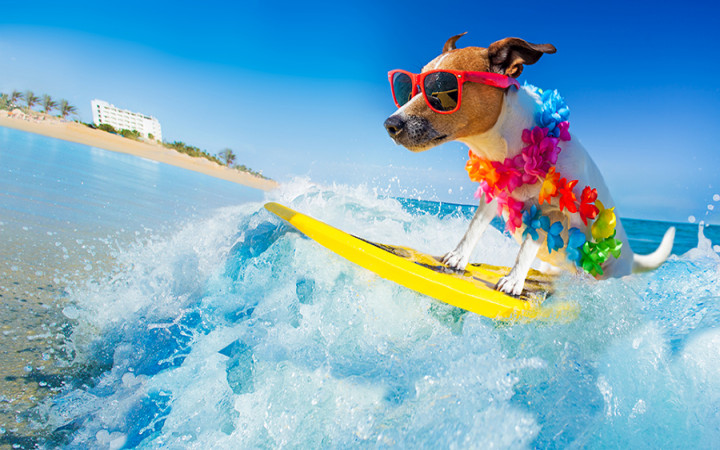Today’s Wonder of the Day was inspired by Jazlynn. Jazlynn Wonders, “How do people surf on top of water? ” Thanks for WONDERing with us, Jazlynn!
We went for a peaceful stroll along the Wonderopolis beach the other day when we happened upon a manatee and a cow having an interesting conversation:
Manatee: Dude! Surf's up! Let's go hang ten!
Cow: Easy for you to say! You're a sea cow. I'm a land cow.
Manatee: Dude, you can do it! Catching your first wave is an udder delight!
Cow: That's OK. You enjoy the surf, and I'll stick to the turf.
We didn't wait around to see if the manatee was able to talk the cow into grabbing a board and catching a wave. Their conversation did make us WONDER, though. Have you ever tried surfing?
Surfing is a beautiful aquatic sport that has been immortalized in everything from popular movies to the classic tunes of the Beach Boys. It has also given rise to a unique culture that flourishes in communities located near oceans around the world.
As thrilling as surfing is, though, it can be dangerous, and it's not the easiest sport to learn. Although surfers who know what they're doing make it look graceful and effortless, it's certainly not as easy as grabbing any old surfboard and hitting the waves.
Learning to surf takes time and patience. It's also helpful if you're in decent shape. Surfing is a whole-body sport that requires strength, solid core muscles, and great balance.
For beginning surfers, one of the most important decisions to make is what kind of surfboard to use. Most experts recommend beginners start with a softboard, which is made of foam for extra buoyancy. Softboards also hurt less if you wipe out and get hit by your board!
The skill that many beginning surfers find most difficult to master is popping up, which is the move that takes you from lying flat on your board to standing on top of it as you catch a wave. Surf instructors advise practicing this move on the beach first. If you can perfect the movement on sand, it'll be easier once you're in the water.
When you're ready to catch your first wave, try to get help from a surf instructor or someone who has experience surfing. Choose a spot with few people and relatively calm surf to start. You'll also want to learn how to scout the area for possible dangers, as well as keep an eye on the weather and surf forecasts.
If you're anxious to try surfing and you don't live near an ocean, don't fret. There's still hope. It's sometimes possible to surf on large lakes and even some mountain rivers. If water flow and weather conditions create waves, you can surf them!




